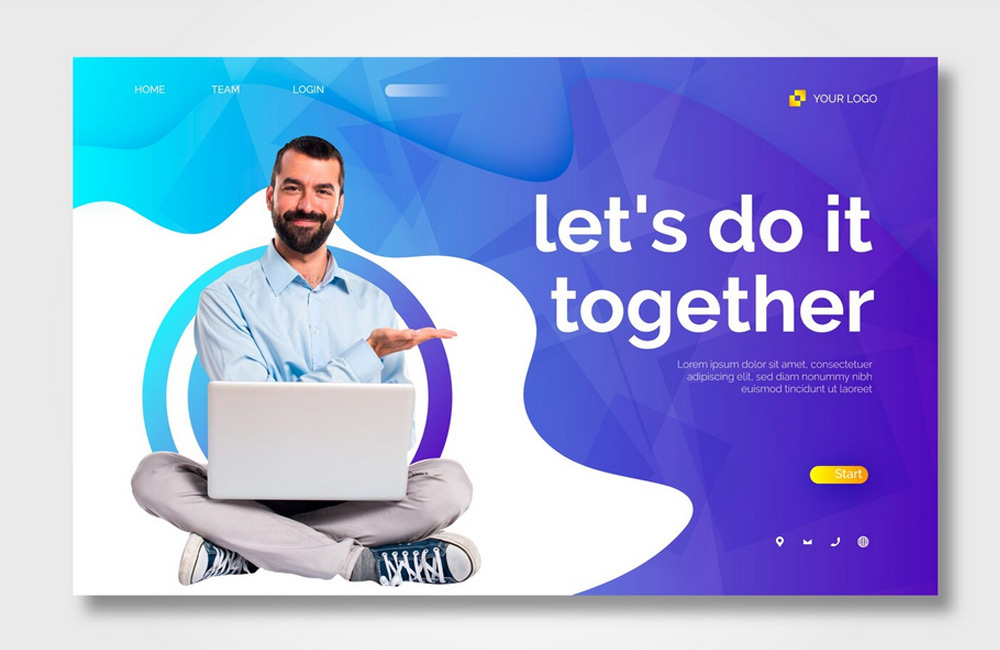Landing pages are specially designed web pages with a clear focus: guiding visitors to a specific action. Whether it’s signing up, purchasing, or downloading – the structure and layout of a landing page play a crucial role in success. A well-designed page intuitively leads users through the content without overwhelming them with unnecessary distractions. It clearly communicates what is offered, why it matters, and what the next step should be.
Why Landing Pages Matter
- Focus: Unlike traditional websites, a landing page directs attention to one goal. This reduces distractions and increases the likelihood that visitors take the desired action.
- Conversion: A clearly structured page with persuasive arguments, emotional elements, and a strong call-to-action (CTA) can significantly boost conversion rates.
- Measurability: Landing pages allow precise tracking and optimization of campaigns, ads, or newsletter actions, making them a key online marketing tool.
- SEO & Ads: Search engine and user-optimized landing pages improve the quality of Google Ads campaigns, leading to lower CPC with higher conversions.
Structure of a Successful Landing Page
1. Headline & Subheadline
The headline is the heart of any landing page. It determines within seconds whether a visitor stays or clicks away. A good headline evokes emotion, triggers a need or promise, and clearly communicates the benefit. The subheadline complements and deepens the main message, often with a brief explanation or added value. Craft it so the reader immediately understands: “This is exactly what I’m looking for.”
2. Visuals
Images and videos speak directly to the subconscious. They make an offer tangible and emotionally engaging. Authentic photos or illustrative graphics build trust, while short videos explain complex concepts quickly. Visuals should support the message, not distract from it. Clear, simple imagery is often more convincing than cluttered graphics.
3. Benefits & Value
Visitors want to know: What’s in it for me? Instead of listing features, describe specific benefits. Explain what problem is solved, how daily life improves, or what results are achievable. Bullet points are ideal for presenting benefits clearly. Use engaging and action-oriented language like “Save time,” “Achieve more,” or “Feel more confident.”
4. Call-to-Action (CTA)
A clear CTA is the goal of every landing page. It should be visible, highlighted with color, and clearly worded. Avoid vague terms like “Submit” – use action-oriented phrases like “Try for Free Now” or “Claim Your Offer.” Repeat the CTA throughout the page, especially after key sections, to increase the likelihood of action.
5. Trust Signals
People buy from people they trust. Showcase testimonials, reviews, partner logos, or certifications. Privacy and secure payment indicators also build trust. Real experiences or numbers (“Over 5,000 satisfied customers”) are more persuasive than generic statements. Authenticity is key – show real faces and actual projects.
6. Minimalist Structure
Less is more. Focus on essentials and remove distractions. Eliminate menus or external links that divert visitors. Every section should contribute to the goal – whether information, emotion, or CTA. A clear visual hierarchy guides the eye naturally toward the desired action.
7. Mobile & Performance Optimization
Over 60% of visitors now access via mobile devices. A landing page must perform perfectly on smartphones and tablets. Use large buttons, fast load times, and clear text structures. Responsive design and fast servers directly influence conversion. Google also considers mobile-friendliness a ranking factor.
Conversion Optimization Tips
- A/B Testing: Test different headlines, CTA texts, and colors to see what works best.
- Short Forms: Minimize input fields – the simpler, the higher the completion rate.
- Scarcity: Elements like “Only valid today” or countdown timers create urgency.
- Clear Layout: Use colors to guide attention to the CTA and ensure enough whitespace.
- Build Trust: Place reviews, guarantees, or security symbols near the CTA.
Common Mistakes to Avoid
- Too many navigation elements that distract from the goal
- Unclear messages or imprecise headlines
- Slow load times or technical errors
- Overloaded pages with too much text or too many visuals
- Unnoticeable or inconsistent CTAs
Conclusion
Modern landing pages thrive on clarity, structure, and trust. They guide visitors effortlessly to a decision and create a positive user experience. When text, design, and technology work in harmony, you get a page that looks good and performs well. At aurelix, I combine design, strategy, and psychology to make your landing pages convert noticeably better.
Further Resource
Image: freepik.com

